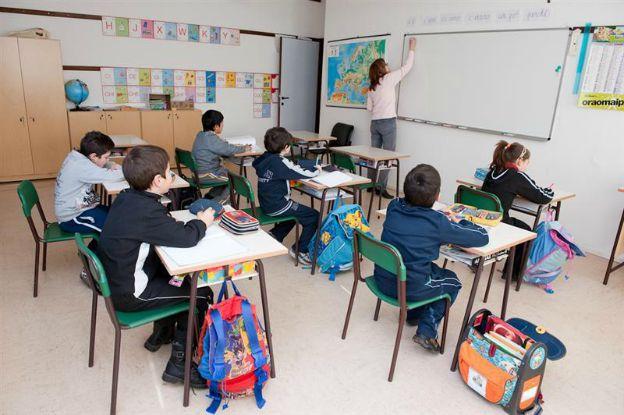Italy's School System
ITA:

It’s back to school season, so let’s take a look at Italy’s education system.
Education in Italy is compulsory from 6 to 16 years of age, and is divided into five stages: kindergarten, primary school, lower secondary school, upper secondary school, and university. Italy has both public and private education systems.
Primary school is commonly preceded by three years of non-compulsory nursery school, or kindergarten.
Primary school lasts five years. Until middle school, the educational curriculum is pretty much the same, regardless of whether the student attends a public or private school: Italian, English, mathematics, natural sciences, history, geography, social studies, physical education and visual and musical arts.
Secondary school lasts 8 years and is divided into two stages: lower secondary school, corresponding to the Middle School grades, lasts three years (age 11-13); upper secondary school, corresponding to the high-school level, lasts five years (age 14-19). At the end of the five years, students are required to take a comprehensive final exam in order to be able to access university.
There are three types of upper secondary school: liceo, technical institute and professional institute. Liceo provides a mostly theoretical education, with less emphasis on technical-practical aspects, and offers a specialization in either humanities, languages, science or art. Technical institutes provide both theoretical education and a specialization in a field of studies, such as economy, administration, technology, or tourism. Professional institutes provide education oriented towards practical subjects, such as engineering, agriculture, gastronomy, handicrafts, and enable students to start searching for a job as soon as they have completed their studies, at times after three years rather than five.
The public school system in Italy is free to all regardless of nationality.
Siamo nel periodo del rientro a scuola, dunque vediamo com'è strutturato il sistema educativo in Italia.
L’istruzione in Italia è obbligatoria dai 6 ai 16 anni di età, ed è suddivisa in cinque fasi: scuola dell'infanzia, scuola primaria (comunemente chiamata scuola elementare), scuola secondaria inferiore (comunemente chiamata scuola media), scuola secondaria superiore (le superiori o il liceo), e università. L'Italia offre sia istruzione pubblica che privata.
La scuola primaria è comunemente preceduta da tre anni di scuola materna non obbligatoria, o asilo.
La scuola elementare dura cinque anni. Fino alla scuola media, il curriculum educativo è praticamente lo stesso, indipendentemente dal fatto che lo studente frequenti una scuola pubblica o privata: italiano, inglese, matematica, scienze naturali, storia, geografia, studi sociali, educazione fisica e arti visive e musicali.
La scuola secondaria dura 8 anni e si articola in due fasi: la scuola secondaria inferiore, corrispondente alla scuola media, dura tre anni (11-13 anni di età); la scuola secondaria superiore ha una durata di cinque anni (14-19 anni di età). Al termine dei cinque anni, gli studenti sono tenuti a sostenere un esame comprensivo finale, l’esame di maturità, per poter accedere all'università.
Ci sono tre tipi di scuola secondaria superiore: liceo, istituto tecnico e istituto professionale. Il liceo offre una formazione in gran parte teorica, con meno enfasi sugli aspetti tecnico-pratici, e una specializzazione in discipline umanistiche, lingue, scienze o arte. Gli istituti tecnici forniscono sia una formazione teorica che una specializzazione in un campo di studi, quali economia, amministrazione, tecnologia, o turismo. Gli istituti professionali offrono un curriculum orientato verso materie pratiche, come ingegneria, agricoltura, gastronomia, artigianato, e permettono agli studenti di iniziare la ricerca di un posto di lavoro non appena hanno completato i loro studi, a volte dopo tre anni anziché cinque.
Il sistema scolastico pubblico in Italia è offerto gratuitamente a tutti, indipendentemente dalla nazionalità.











